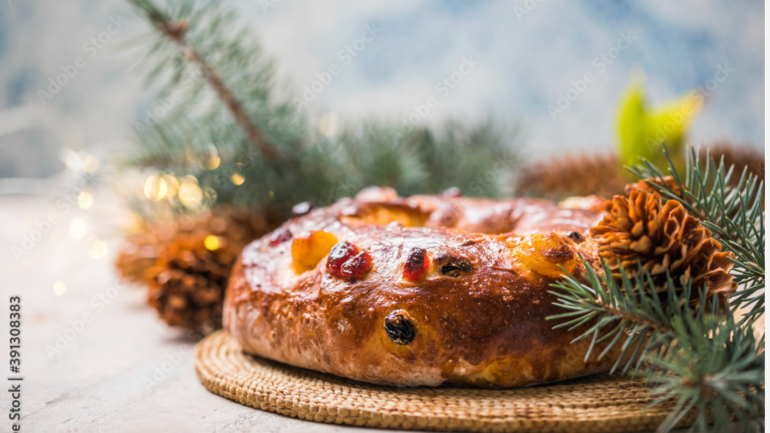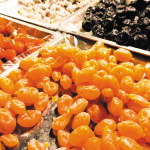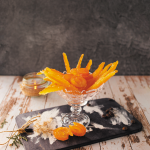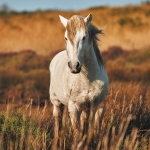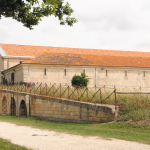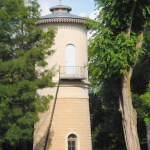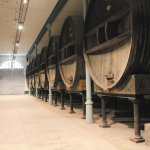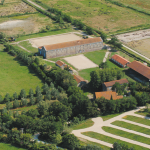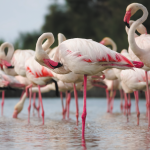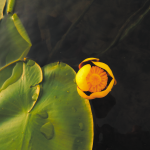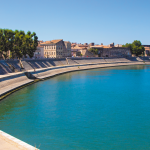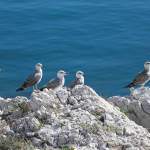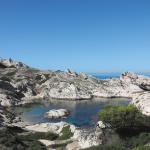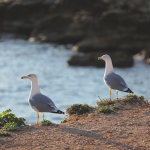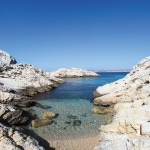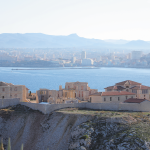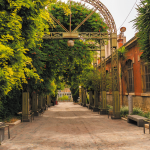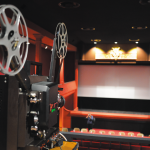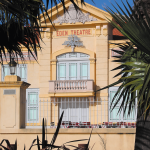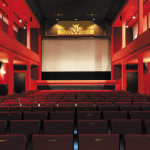Noël en Provence : traditions, authenticité et partage
Provençal Christmas is a celebration rich in customs, both pagan and religious, and a special time to prepare a convivial table. Whether modest or sumptuous, every family wishes it to be beautiful, warm, and a source of wonder.
The festivities begin on December 4, the day of Saint Barbara, when wheat is sown in small plates. Wheat sprouts, following a fertility rite dating back to antiquity, represented the first fruits of the harvest to favor a good harvest in the coming year. Saint Barbara’s wheat has since become a decorative element for the Advent period and the Christmas Eve table.
The table setting is full of symbols: three white tablecloths are arranged, alluding to the Holy Trinity, “One for the Father, one for the Son, one for the Holy Spirit.” First the longest, then the medium, and finally the smallest on top, anticipating the three meals – on the 24th, the noon meal on the 25th, and that of the 26th called the second Christmas feast. The tablecloth used after each meal was removed. On the evening of December 24, the gros souper (big supper) is actually rather modest. Excessive eating is avoided on Christmas Eve. No meat, but cod, mullet, snails, omelette, sole, artichoke, lentils, and salsify.
The thirteen desserts are arranged on the table, but hands off! They are enjoyed after the midnight mass with mulled wine. There has never been an official list, but there must be thirteen, with essentials like pompe à l’huile, white and black nougat, candied fruits, dates, and the four beggars: walnuts or hazelnuts, dried figs, almonds, and raisins. Fresh fruits such as tangerines, apples, pears, grapes, as well as confectioneries like calissons, quince paste, or almond paste, are also present. According to tradition, each guest must eat a bit of each dessert to ensure good fortune throughout the year.
The Christmas Carols tour is a magical moment in Provence, with 62 free concerts from December 2 to 22, 2023. This year, 7 ensembles invite you on a journey through the world’s Christmas carols, in churches, theaters, and performance halls. Christmas in Provence is a blend of ancient traditions and modern festivities, a time to reunite with family and an invitation to share delicious meals.
Les fruits confits : joyaux de la gastronomie provençale
In Provence, candied fruits shine like sweet treasures at the heart of the region’s rich gastronomic tradition. Whether on the Kings’ brioche, in calissons, or among the thirteen desserts, these delicacies are essential. Behind their delicious flavor lies an ancestral artisanal expertise that has endured through the centuries.
In the early 16th century, despite having fertile land, Provence faced poverty, and a significant amount of fruits went to waste each year. It was during this time that Nostradamus, a native of Saint-Rémy-de-Provence, conceived the idea of preserving them by candying them in sugar. He developed the technique of successive boiling and shared his secrets in the “Treatise on Face Paints and Confections” in 1555, teaching how to “candy small lemons and oranges whole.”
The candying process is a true alchemy. Each fruit is treated in a specific manner. Some, like mandarines, are blanched for several days to soften them, probed with a needle to check their cooking degree before being added to the sugar syrup. Day after day, the fruit’s water is replaced by the syrup. Other more delicate fruits, such as strawberries, require no pre-cooking and are delicately immersed in the syrup. Once candied, they are glazed (dipped in a final syrup that crystallizes them) to preserve their softness and allow them to remain dry to the touch.
Artisanal businesses like Fruidorex in Eguilles and Lilamand in Saint-Rémy-de-Provence continue this tradition, as do Béchard, Brémond, and Léonard Parli in Aix-en-Provence, who continue to candy various fruits, especially apricots. In their shop windows, whole candied melons are an invitation to indulgence…
Provence is also famous for its calissons, composed of a fine almond paste, enhanced with candied oranges and melons, coated with royal icing, and placed on a wafer paper, whose tapered shape evokes the almond. This specialty from Aix-en-Provence, dating back to the 15th century, draws inspiration from various Mediterranean traditions, including Greek and Roman, which already combined almonds and candied fruits.
Candied fruits and calissons, true emblems of Provencal culinary richness, reveal the magic of a sun-drenched land rich in flavors. Provence celebrates the beauty of its local products while preserving age-old traditions that delight gourmets worldwide.
Le Mas de la Cure : sanctuaire du cheval camarguais
Nestled in the heart of the Camargue, facing the famous Château d’Avignon, Mas de la Cure embodies the history of the region, where a rich and abundant past unfolds across its lands.
In the 19th century, a prominent figure in the region, Louis Noilly-Prat, a renowned wine merchant known for his vermouth, left an indelible mark on this place by acquiring Mas de la Cure and Château d’Avignon. The mas became a vineyard property spanning 283 hectares, a true babel tower in the marshes. At that time, the Camargue was one of the few places resisting the phylloxera crisis, the devastating insect that ravaged vineyards throughout France. Thanks to an irrigation system flooding the vineyards, Mas de la Cure contributed to preserving this viticultural treasure. The estate evolved into a veritable village, housing a chapel, a bakery, a forge, a sheepfold, a refectory, and residences. After World War I, with wine becoming less profitable, owners turned to other crops such as rice and asparagus, benefiting from an exceptional irrigation system.
Sold to the Coastal Conservatory in 1985, Mas de la Cure found its true calling in 2002. A group of enthusiasts, united within the association La Maison du Cheval de Camargue, took charge of the property. The agenda included renovating buildings, creating a riding arena, and acquiring about thirty horses. Today, it has become a sanctuary for equestrian tradition, welcoming students and disabled individuals, thanks to equine therapy. The association plans to open a horse museum, offering an immersive journey into the history of these animals, in the pure tradition of the guardians.
Here, it is a true icon, capable of facing a bull to guide it in a field. It cherishes its freedom, living outdoors throughout the year. A ministerial decree in 1978 granted it a specific breed definition, protected by law. Today, it is mainly used by breeders in working with bulls and competitions. Its most remarkable characteristic lies in its ability to reproduce freely, making it one of the most prolific breeds in France.
It is at Mas de la Cure, in this unique place, that history and nature converge to form a unique and enchanting whole.
Biodiversité : les Bouches-du-Rhône protègent leur trésor naturel
With over 9,000 species documented, including 525 protected and 201 endangered, the Bouches-du-Rhône department boasts exceptional biodiversity. However, these natural riches are threatened by habitat destruction and ecosystem fragmentation.
As the first department owning natural spaces in France, with 18,000 hectares under its care, it plays a key role in safeguarding plant and animal species. It initiated an innovative biodiversity preservation policy, becoming a national example. Thus, it integrated biodiversity into all its public policies, from territorial planning to education, including integration, agriculture, tourism, and culture.
Concrete measures for biodiversity preservation have been implemented, notably concerning the black swift, a small migratory bird well-known in Provence, whose population has declined. To save it, 80 nesting boxes were installed in colleges and willing municipalities. The “Provence Verte” program aims to green urban areas, financing public space greening projects. In just 3 years, this initiative led to the planting of 4,420 trees, the realization of 25 projects with a food focus, and 81 adjustments to combat heat.
The Sainte-Victoire National Nature Reserve, owned by the Department, enjoys one of the highest levels of protection in France. Rare species, such as the common genet, or protected ones like the Bonelli’s Eagle, nest there. This site undergoes numerous participatory and biological inventory operations. Bats, with 23 identified species, are part of a national safeguard plan to which the department contributes. The Lambruisse and Saint-Pons departmental domains are recognized as pilot sites for preservation.
The site hop-levivant.fr is a true atlas of all observed wild species in the Bouches-du-Rhône territory, aiming to share knowledge about the 3,200 documented species.
It complements various educational publications, such as the Biodiversity Atlas and the Landscape Atlas.
The richness of biodiversity is a collective heritage deserving preservation for future generations.
Les trésors du Rhône : plongée dans l’histoire engloutie
In Arles, a city steeped in history along the Rhône, some mysteries of the river remain elusive. Since the discovery in 2004 of the Arles-Rhône 3 barge, classified as a national treasure by the state, archaeologists from the Arles Antique Departmental Museum (MDAA) have continuously delved into the depths of the Rhône, gradually revealing the remnants of a rich and buried past.
The MDAA, a key player in archaeological research in the region, plays a crucial role in illuminating these historical treasures. It not only participates in research programs and directs scheduled archaeological operations but also shares these discoveries. Recently, a significant operation captured national and international attention. The excavation of the ancient port dump and the Arles-Rhône 3 wreck marked a major turning point in this archaeological quest. It led to the recovery of a Gallo-Roman barge, a precious historical discovery deserving restoration and exhibition. This vessel, the most complete ever found from the Roman period, inspired the creation of a new wing at the museum dedicated to the fluvial-maritime port of Arles in Roman times. It also houses nearly 480 objects related to navigation, trade, and port activities.
But the story doesn’t end there. In 2023, the underwater archaeologists of the MDAA once again ventured into the mysteries of the river as part of the “Rhône 2023” operation, the first step in a research program promising to reveal even more buried treasures. This audacious mission aims to locate and assess the preservation of several Roman wrecks dating from the 1st to the 4th century. It involves searching for a boat, a small maritime vessel, and three fluvial-maritime ships. Studies and analyses already conducted on the Gallo-Roman barges Arles-Rhône 3 and 5 attest to the importance of the data that can be extracted from wrecks of such quality, providing valuable insights into maritime life and port activities in antiquity.
Underwater archaeological exploration reminds us both to preserve and explore the past and that historical heritage may lie beneath the waves. The Rhône provides a fascinating window into the past and the history of the Arles region. With its unfathomable mysteries, it continues to astonish and captivate.
Archipel du Frioul : entre histoire et nature
The Frioul Archipelago, located off the coast of Marseille, offers an off-the-beaten-path destination in the heart of the Calanques National Park. A unique combination of wild landscapes marked by history, these former military fortresses are now an escape for nature lovers away from the city bustle.
Attached to the 7th arrondissement of Marseille and accessible only by sea, this archipelago consists of four islands, with Ratonneau and Pomègues being the main ones, connected by a dike. Over the centuries, they played a crucial role in Marseille’s military history due to their strategic position in the harbor. From the first forts built under Henri IV to the remnants left by Allied bombings during World War II, the archipelago still bears the scars of its past. The islands also played a significant role in protecting the city from epidemics.
Preserved by the mistral and sea spray, this nature allows for the discovery of diverse landscapes, including coves, limestone cliffs, beaches, and creeks. Despite the arid climate, the fauna and flora are exceptional. There are about 350 plant species typical of the Marseille coastline, including 20 rare and protected ones. The sites serve as a refuge for marine birds, and the underwater life is abundant.
The exploration begins at Port-Frioul on the island of Ratonneau, with its small chapel resembling a Greek temple. The island houses some dwellings, restaurants, and shops. From there, head to the Saint-Estève cove, with its beach equipped with a marked underwater trail in the summer. The Maison des Pilotes, offering a breathtaking view of the sea, is also a must-see. Crossing the Berry dike, you reach the island of Pomègues, the wildest and uninhabited, popular for its beaches and paths along the cliffs. The Poméguet Tower, located above, offers a spectacular panoramic view. The island of If is entirely occupied by the famous Château d’If, the first fortification of the archipelago built in 1531 by François 1er. Regular maritime connections ensure access to the Frioul Archipelago throughout the year from the Old Port of Marseille.
www.lebateau-frioul-if.fr
L’Eden Théâtre : le plus ancien cinéma du monde
A true cultural icon, the oldest operating cinema, Eden Theatre, has played a fundamental role in the history of cinema. Located in La Ciotat, the world’s cradle of cinema, it continues to illuminate the spirit of the Lumière brothers.
On September 21, 1895, an unforgettable event unfolded in the Ciotat residence of the Lumière brothers. The world’s first private screening of their revolutionary invention, the cinematograph, drew notables from the city, including Raoul Gallaud and Adelaïde Soula, owners of the Eden Theatre located nearby. This marked the beginning of the cinema’s history.
Originally built in 1889 by Marseillais Alfred Seguin as a theater, it hosted itinerant theater troupes, operetta singers, and concerts, quickly becoming the city’s cultural hub. In October 1895, the new owners, Raoul and Adelaïde, suggested to their friend Antoine Lumière to organize a public showing of the brand-new cinematograph in their theater. Despite some technical issues, the screening was memorable, sealing the union of cinema and Eden.
Soon after, for nearly fifty years, the venue exclusively became a space dedicated to the 7th art. However, in the 1970s, the cinema crisis gradually halted film screenings. Paradoxically, the creation of a festival dedicated to the Lumière brothers in July 1981 signaled the end of Eden, which remained closed for nearly thirty years. In 2013, it experienced a renaissance, thanks to the association Les Lumières de l’Eden, with Claudia Cardinale and Daniel Toscan du Plantier as godparents. After months of renovation and support from local authorities and the state, a new Eden emerged from its ashes. Classified as an art and essay cinema with a Heritage label, it now welcomes over 28,000 spectators annually and continues to thrive.
International recognition arrived in 2021 when the Eden Theatre was officially recognized by the Guinness World Records as the oldest operating cinema in the world. This process required two years of meticulous work, investigation, and research, gathering evidence of its existence over more than 130 years. The last screening is not scheduled for tomorrow.

